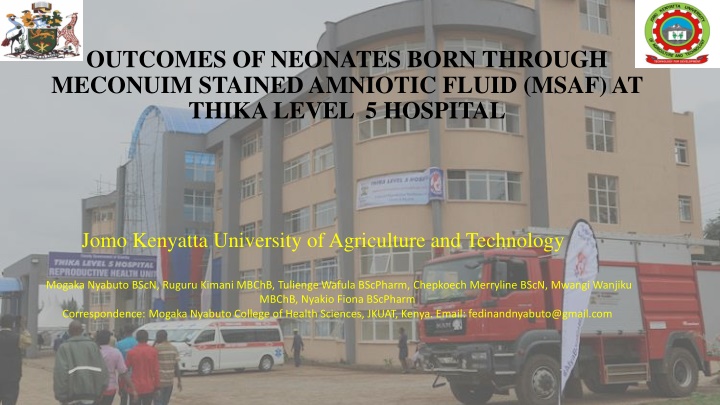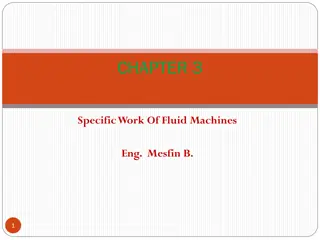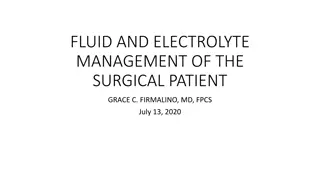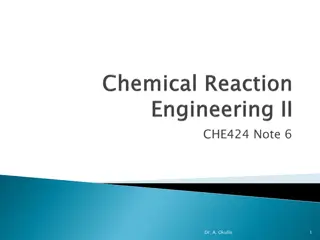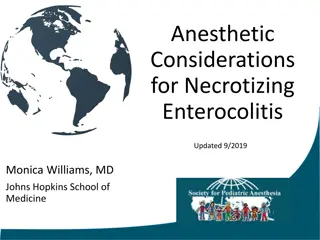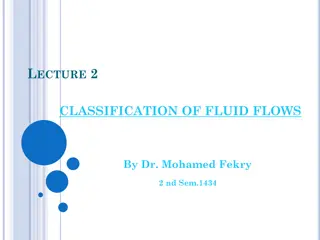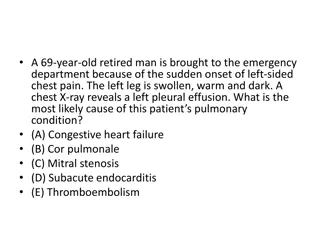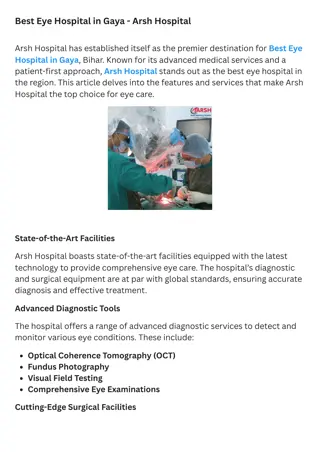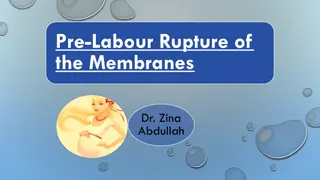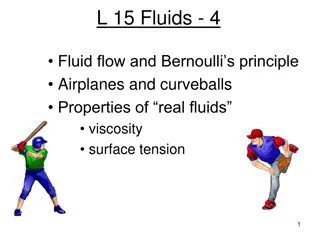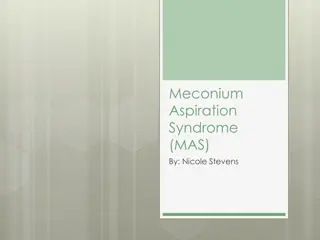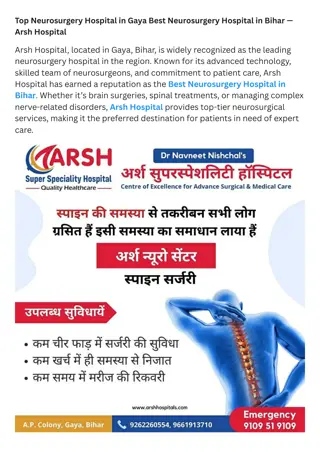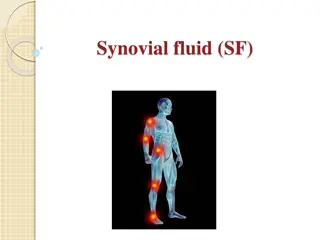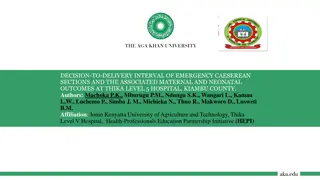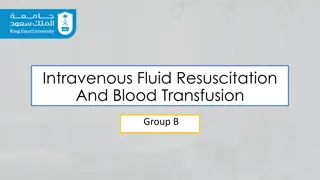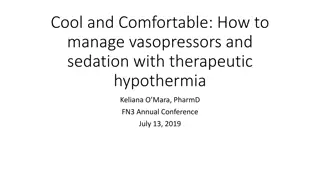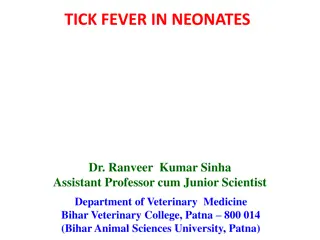Outcomes of Neonates Born Through Meconium-Stained Amniotic Fluid at Thika Level 5 Hospital
Incidence of meconium-stained amniotic fluid is significant in Kenya, leading to complications like Meconium Aspiration Syndrome and more. This study aims to determine outcomes of neonates born through MSAF at Thika Level 5 Hospital to improve neonatal care and reduce related morbidities and mortalities. The research involves a cross-sectional study design, evaluating data from maternal and neonatal wards using total population sampling and data analysis tools like Excel and SPSS.
Download Presentation

Please find below an Image/Link to download the presentation.
The content on the website is provided AS IS for your information and personal use only. It may not be sold, licensed, or shared on other websites without obtaining consent from the author.If you encounter any issues during the download, it is possible that the publisher has removed the file from their server.
You are allowed to download the files provided on this website for personal or commercial use, subject to the condition that they are used lawfully. All files are the property of their respective owners.
The content on the website is provided AS IS for your information and personal use only. It may not be sold, licensed, or shared on other websites without obtaining consent from the author.
E N D
Presentation Transcript
OUTCOMES OF NEONATES BORN THROUGH MECONUIM STAINED AMNIOTIC FLUID (MSAF) AT THIKA LEVEL 5 HOSPITAL Jomo Kenyatta University of Agriculture and Technology Mogaka Nyabuto BScN, Ruguru Kimani MBChB, Tulienge Wafula BScPharm, Chepkoech Merryline BScN, Mwangi Wanjiku MBChB, Nyakio Fiona BScPharm Correspondence: Mogaka Nyabuto College of Health Sciences, JKUAT, Kenya. Email: fedinandnyabuto@gmail.com
BACKGROUND INFORMATION Incidence of Meconium Stained Amniotic Fluid in Kenya is at 12.7%1.Incidence reported in Asia 6.5%2. Identified complications of Meconium Stained Amniotic Fluid include Meconium Aspiration Syndrome, Persistent Pulmonary Hypertension of the Newborn , pneumonia3. Interventions carried out include suctioning of the nose and mouth and also use of antibiotics2. Associated factors: prolonged labour, postdatism, preterm rapture of membranes, gestational Diabetes3. References 1. Addisu, D., Asres, A., Gedefaw, G., & Asmer, S. (2018). Prevalence of meconium-stained amniotic fluid and its associated factors among women who gave birth at term in Felege Hiwot comprehensive specialized referral hospital, North West Ethiopia: a facility based cross-sectional study. BMC Pregnancy and Childbirth, 18(1). https://doi.org/10.1186/s12884- 018-2056-y 2. Shrestha, A., Singh, S. D., & Tamrakar, D. (2018). Associated factors and outcome of babies born through meconium stained amniotic fluid. Kathmandu Univ Med J, 61(1), 65-8. 3. Patel, S., Patel, B., Shah, A., Jani, S., & Jani, C. (2020). Prevalence of meconium stained amniotic fluid and meconium aspiration syndrome according to gestational age and parity of mother.
OBJECTIVE AND PURPOSE Broad Objective: To determine outcomes of neonates born through meconium-stained amniotic fluid at Thika Level 5 Hospital in the maternity and new born unit in June and August 2021. Problem: Reduce erroneous admission of neonates who only have meconium exposure and not aspiration - strenuous to the workforce due to the large number of newborn unit admissions. Significance: The findings were to influence reviews, to reduce meconium stained amniotic fluid-related morbidities and mortalities.
METHODOLOGY METHODOLOGY Study site: Thika Level 5 Hospital, Kiambu County Study design: Cross-sectional, descriptive, ambi-directional study design - compared prospective(21) and retrospective(21) data. Study population : All mothers admitted to the labour ward at Thika Level 5 Hospital. All neonates who were in the neonatal ward. Sampling technique: Total Population Sampling. Data collection tools: A pre-designed proforma was filled by reviewing clinical notes. Data management and analysis: Microsoft Excel program and SPSS version 26.0 for analysis. Data presentation: Tables, graphs and a pie charts.
RESULTS A total of 670 deliveries were recorded from June 19th to Aug 19th. 42 (6.78%) births were reported to have MSAF. Presence of meconium stained amniotic fluid was graded at 3 levels, with the Grade 3 being more common at (n=22, 52.38%), Grade 2 (n=15, 35.7%) and Grade 1(n=5, 11.9%) (n=26, 61.9%) had received some resuscitation measures, involving BVM, suctioning and warming. (n=20, 47.6%) had complications and (n=15, 35.7%) necessitating admission in the new born unit. (n=22, 52.3%) of the neonates with MSAF did not develop complications.
Gestational Age Grade of MSAF Neonatal Outcomes MAS 7% Birth asphyxia 12% RDS, Birth asphyxia 9% 52% Neonatal Sepsis 10% Neonatal Sepsis, MAS 10% No complications
DISCUSSION AND LIMITATIONS There was an association between the children who underwent resuscitation and those that developed complications ( n=26,61.9%). (p=0.038) In this study, interventions included: suctioning , bag ventilation with mask, warming, vital signs, and physical examination. In this study,20 neonates had complications (n=5,11.9%) with asphyxia being the most common. Limitations Limited data available from the retrospective data set due to incompletely filled patient forms. The study was conducted for only 2 months due to time constraint and generalization of findings for the hospital may be compromised by seasonal variations.
CONCLUSION AND RECOMMENDATIONS Major intervention upon meconium-exposure was resuscitation. Neonatal resuscitation linked to increased complications. Continuing professional education and training for healthcare providers, maternity department, on resuscitation measures and meconium grading. Further studies for longer periods and larger samples. Study area: Quality improvement on documentation and management of babies born through meconium-stained amniotic fluid (MSAF).
ACKNOWLEDGEMENT God Almighty. Health-Professional Education Partnership Initiative (HEPI) - Kenya and collaborative institutions. Supervisors Dr. Lusweti (Consultant Pediatrician TLVH), Dr. Makworo (Senior Lecturer SoN, JKUAT), Dr. Penina Kanario. JKUAT (SoMed, SoN, SoPharm, ERC.) TLVH Administration and Maternity unit (LW & NBU).
